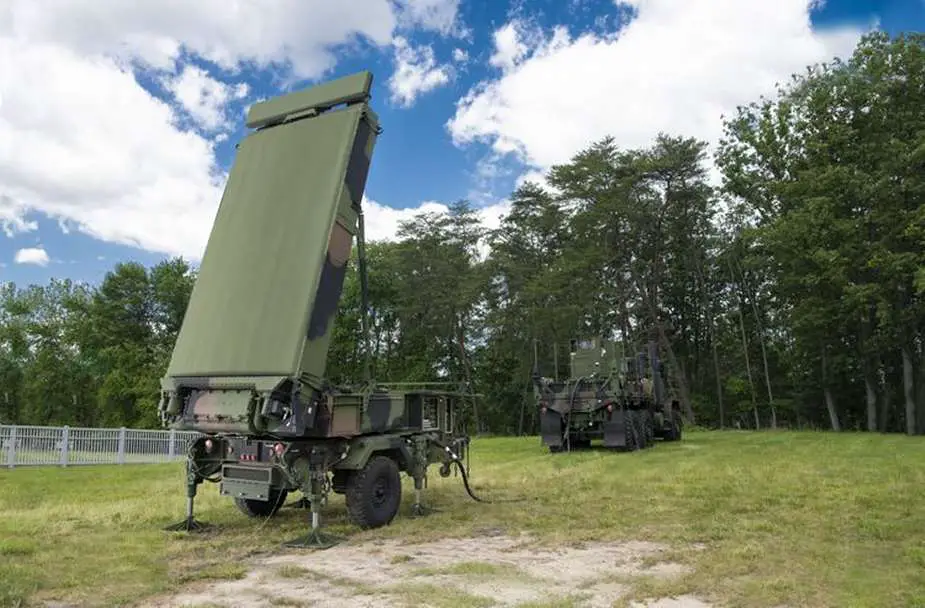US Air Force selects Northrop Grumman’s AN/TPS-80 G/ATOR unified radar
On April 24, 2024, Northrop Grumman announced that the US Air Force (USAF) selected its AN/TPS-80 Ground/Air Task-Oriented Radar (G/ATOR), following a similar decision by the US Marine Corps (USMC). This radar system, recognized for its multifunction capabilities and 360-degree coverage, represents the next generation of American air surveillance/air defense and Air Traffic Control (ATC) Radar.
Follow Army Recognition on Google News at this link

Initially intended to enhance Marine Corps capabilities, the AN/TPS-80 G/ATOR radar aims to combine the capabilities of five legacy radars into a single system. (Picture source: Northrop Grumman)
Developed by Northrop Grumman, the AN/TPS-80 Ground/Air Task-Oriented Radar (G/ATOR) is a multifunctional radar system designed to provide comprehensive 360-degree surveillance and target acquisition capabilities against various threats. Initially intended to enhance Marine Corps capabilities, the radar aims to combine the capabilities of five legacy radars into a single system, thereby reducing redundancy and optimizing resource use. The systems replaced by the AN/TPS-80 G/ATOR include the AN/TPS-63 for air defense, the AN/TPS-73 for air traffic control, the AN/MPQ-62 for short-range air defense, the AN/TPQ-46 for counter-fire target acquisition, and the UPS-3 for target tracking.
Managed by the Program Executive Office (PEO), Land Systems Marine Corps, the G/ATOR's development is structured into four capability blocks. Block 1, the primary material system acquisition, supports short-range air defense, air surveillance, and provides an Air Defense/Surveillance Radar (AD/SR) capability to the Marine Air-Ground Task Force (MAGTF). Subsequent blocks involve software upgrades and additional capabilities such as ground counter-battery/fire control (Block 2) and air traffic control capabilities (Block 4). Block 3 capabilities are currently undefined and have been deferred indefinitely.
The AN/TPS-80 G/ATOR radar system consists of three main subsystems: the Communications Equipment Group (CEG), the Radar Equipment Group (REG), and the Power Equipment Group (PEG), which work together to provide real-time radar measurement data to various operational modules and systems. Designed for high mobility and rapid deployment, the radar and its subsystems are mounted on High Mobility Multi-purpose Wheeled Vehicles (HMMWVs) or integrated trailers. The entire system can be operational within 45 minutes of deployment and can be airlifted by three CH-53E Super Stallion helicopters, MV-22B Osprey tilt-rotor aircraft, or a single C-130 transport aircraft.
In terms of specifications, the AN/TPS-80 G/ATOR is a multipurpose radar capable of tracking and surveillance across the S-band (2–4 GHz) frequency range, functioning as a 3D radar system. It can detect both fixed and rotary-wing aircraft, cruise missiles, and unmanned aerial vehicles (UAVs), and also fulfills roles in air traffic control (ATC) and fire finder operations. Additionally, the system includes an integrated Telephonics UPX-44 Identification Friend or Foe (IFF) to assist in identifying friendly aircraft.
Since its initial development contract awarded in 2005, the G/ATOR system has been subject to several enhancements, including the adoption of Gallium Nitride (GaN) technology, which has been incorporated to improve the operational effectiveness of the radar system. This technology has been significant in addressing the demands of the US Marine Corps for a durable and effective radar capability. Notably, in 2019, Northrop Grumman received a $958 million contract for the production of 30 full-rate systems that utilize this GaN technology, marking a significant phase in the radar's development. The G/ATOR's evolution has also been supported by a collaborative framework involving various subcontractors. A key participant in this process has been Saab, which has contributed major subsystems and software since the program’s early stages.
- Hits: 4820
















